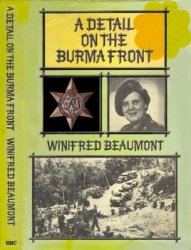On the morning of 15 May Churchill was awakened by a phone call from the French Prime Minister, Paul Reynaud, who said: “We are beaten, we have lost the battle.*’ This cry of despair was out of character with the aggressive little man with the dyed hair and the overbearing mistress. “Mickey Mouse,” as his enemies called him, had been one of the few Frenchmen interested in preparing his country for war.
Churchill was alarmed by such despondency when the battle was less than a week old. He flew to Paris the next day. The Dutch Army had already capitulated virtually intact. Gloom pervaded the Anglo-French conference. Sixteen French generals had already been dismissed for failing in their duty. Corap had been replaced. General Huntziger had ordered that French soldiers precipitately surrendering blockhouses must be fired upon.
A hole had been punched through the French line, between the armies of Huntziger and Corap, and the Germans were streaming through it. Gamelin—the French Commander in Chief—admitted that the long corridor which the Germans had formed, with a need for flank guards along its whole length, was a vulnerable target. He gave a hopeless shrug of his shoulders and said, “Inferiority of numbers, inferiority of equipment, inferiority of method.”
However, the French High Command maintained their calm optimism. The vocabulary of the First World War was being given a new airing. The Meuse had been crossed, but the enemy was being “held” and “contained.” The “situation is improving” and the enemy “sealed off.”
Even during that terrible day of 15 May, the French GHO was not alarmed. But reports were getting shorter and fewer as communications failed and commanders froze into indecision. The High Command began imagining attacks upon the Maginot Line and still had not
Even begun to understand the German strategy. Gamelin’s report for 15 May did not dwell upon inferiorities. On the contrary, he detected “a lessening of enemy action, which was particularly violent on the 14th May.” The front was “re-establishing itself.”
In fact, the action had not lessened. It had quickened. Rommel pushed his men on even during the night. He described the scene: “Our artillery was dropping heavy harassing fire on villages and the road far ahead of the regiment. . . civilians and French troops, their faces distorted with terror, lay huddled in the ditches... we drove through the villages of Sars Poteries and Beugnies with guns blazing...” The blitzkrieg spared no time separating terrified civilians from active opposition.
It was Rommel’s declared policy to shoot first and ask questions afterward. He wrote: “I have found again and again that in encounter actions, the day goes to the side that is the first to plaster its opponent with fire. The man who lies low and awaits developments usually comes off second best. Motorcyclists at the head of the column must keep their machine guns at the ready and open fire the instant an enemy shot is heard. This applies even when the exact position of the enemy is unknown, in which case the fire must simply be sprayed over enemy-held territory”*




 World History
World History





![Black Thursday [Illustrated Edition]](/uploads/posts/2015-05/1432470149_1431513568_003514b1_medium.jpeg)



